BRANCHING OUT
ADAPTING YOUR OWN RECIPES FOR THE TRAY PACK METHOD
Once youve become experienced cooking with our method, there may come a time when you will want to adapt your own recipes for making ahead. Many of your favorite recipes will be good candidates for adaptation. Here are a few suggestions to consider:
CONSIDER THE MEAT. Look at the type and amount of meat in your original recipe. Be sure that the same or a similar cut of meat is sold at the warehouse. Divide the number of pounds in the club package by the amount required in your recipe. For example, if the original recipe calls for 1 pounds of pork tenderloin, you take the warehouse package size of 4 pounds and divide it by 1, giving you the number 3. This tells you that you must multiply the recipe by 3 in order to use the entire package of pork. Begin with this general guideline, but expect to have to adjust individual recipe ingredients as discussed in the rest of this section.
ADJUST AMOUNTS FOR SALT AND PUNGENT SPICES. In our experience, many recipes call for too much salt in the first place. As a rule of thumb when doubling or tripling a recipe, the salt needs to be increased by only half. For example, if the original recipe calls for 1 teaspoon of salt, use teaspoon for each factor of multiplication of the recipe. So, if youre doubling the recipe, you would use 1 teaspoons of salt; for tripling, 2 teaspoons of salt total. Use this same rule of thumb for pungent spices, such as crushed red pepper, cinnamon, curry powder, cayenne pepper, and cumin. Its easier to add more seasoning to an underseasoned entre than to diminish its effect after youve used too much.
BE CAREFUL WITH SALTY-FLAVORED SAUCES AND VINEGARS. Take care when multiplying salty sauces such as soy sauce, Worcestershire sauce, ketchup, and flavored vinegars. If you want to keep the same amount of liquid, consider using reduced-salt versions of these products, or use broth, apple juice, or water as a substitute for a portion of the original amount (see Firehouse Pork Skewers [page 127] as an example). If the amount of liquid is not a concern, begin by cutting the original amount called for by  before multiplying the ingredient.
before multiplying the ingredient.
MULTIPLY MILD HERBS AND SEASONINGS NORMALLY. Mild herbs and seasonings can be successfully multiplied without adjustment. Basil, oregano, thyme, marjoram, garlic, and ginger are not as concentrated as other spices. Its still possible to use too much, but the probability that too much of these seasonings will ruin an entire batch of entres is low.
TAKE NOTES AS YOU EXPERIMENT. Good record keeping will help you perfect a recipe youre adapting. Sometimes, the right amount of sauce, marinade, breading, or topping for one recipe will be too much or too little when multiplied for several recipes. Take notes while youre putting a recipe together, and after youve eaten the dish, too, so youll know what to adjust the next time.
REMEMBER THAT CERTAIN INGREDIENTS, SUCH AS LETTUCE AND CUCUMBERS, DO NOT FREEZE SUCCESSFULLY. Other ingredients need special care before they go into the freezer: for example, raw potato will turn black in the freezer, so be sure to cook it first. Some vegetables freeze fine when raw as long as theyre in a sauce or soup (carrots and celery, for example), but others should be blanched before freezing (cauliflower and green beans). See resources (page 241) for books that discuss freezing vegetables, fruits, and herbs in more detail.
COMMUNITY COOKING OPTIONS: FOOD AS FELLOWSHIP Many of the recipes in Fix, Freeze, Feast were developed while we were operating our own in-home meal-preparation businesses. Our businesses were a little different from the do-it-yourself group because we planned, shopped, and organized all the details for each group. Yet the recipes we developed lend themselves nicely to the small group that wishes to begin cooking together on its own. Cooking groups have been featured in many magazines and on popular Internet sites because theyre a great option for individuals who want to save time and money while enjoying the company of friends. What could be better? There are several ways to structure a do-it-yourself cooking group:
A COOKING CLUB. In a cooking club, the group agrees on what recipes to make, divides the shopping and organizing duties, and comes together on a specified day to prepare the meals together. This arrangement works well for members who have different skills and task preferences. For example, a person who dislikes shopping but doesnt mind dealing with money will probably be happy in a group with someone who loves shopping but dislikes money matters. It also works well for groups whose members dont want to go back home alone to cook in their own kitchens but have time for and are open to a more social experience of meeting new members and catching up with friends. The home party is our specialty. For more information and how-tos for home parties, visit our Web site www.fixfreezefeast.com.
A COOKING CO-OP. In a co-op format the group assigns recipes to individuals. Members go home and make their entres and everyone meets later to swap meals. Each person is responsible for shopping and cooking all entres of the assigned recipe. For example, in a cooking group of six, if Sue gets assigned Beef Barley Soup and Jenny gets Sweet Asian Chicken, each will make six of their assigned recipe and then meet at a designated spot to swap. At the swap, each member gives five entres away and receives five from the other members. The cooking co-op format works well for groups that have difficulty finding the time or space to gather for food preparation and cooking.
Whatever type of group cooking you choosea club, a co-op, or a hybrid of the twothe benefits of cooking together remain the same. Together you share the costs, in time and money. Together you try new dishes without doing all the recipe research, planning, and work. And, perhaps most important, you get to do it all with friends, supporting one another, exploring new foods, and building relationships along the way.
FOOD AS SERVICE
Put your experience with make-ahead meals to good use for charity. The skills youve developed with this method could be used to make a wonderful donation to a nonprofit group. Schools, community service agencies, and religious organizations often need donations for auctions and other fund-raisers. A selection of frozen entres garners high bidseveryone wants make-ahead meals!
FOOD AS MINISTRY
When a friend or neighbor is facing a crisis or transition, a practical way to help is by providing a meal or two. People often offer their good intentions: Let me know if theres anything I can do to help, but the person in crisis is then placed in the awkward position of having to ask for help. Even the most organized, accomplished cook may find it difficult to continue with regular tasks when faced with a major disruption in the regular routine. If you show up with some frozen entres in hand, youll have the satisfaction of helping and your friend will appreciate your thoughtfulness.
Keeping meals on hand means needs can be met as they arise, not just when you have some extra time. Often meals are needed in a hurry, such as when there is a death, a sudden illness, or another unexpected trauma. Other times, the provision of meals can be planned for, as in the case of a scheduled surgery or a babys birth or adoption. It wont take long before you begin to see needs all around you that can easily be met with make-ahead meals.
Structured ways of providing meals within communities exist, too. In many churches, support groups, and other groups of like-minded people, meal banks are becoming a popular way to keep nutritious food on hand for those in need. Small groups can gather to prepare entres to be stored in a church or community freezer and delivered at the necessary time. The meal bank can be set up formally with set times for filling the freezer and specific people in charge of delivery, or it can be done more casually to supplement an existing hot meal delivery program.


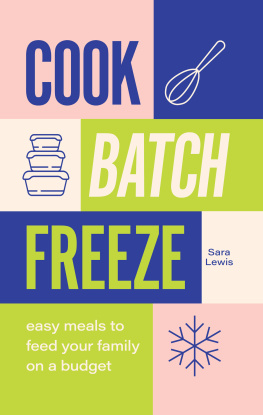
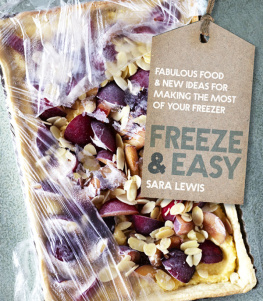

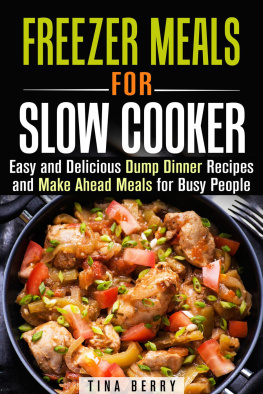
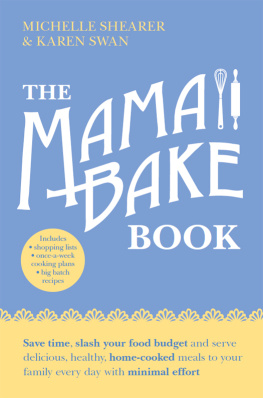
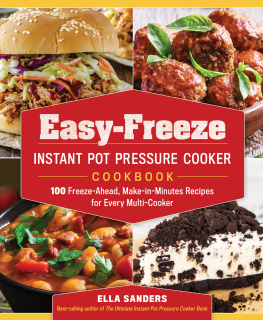
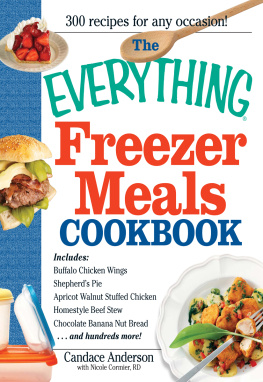
 before multiplying the ingredient.
before multiplying the ingredient.